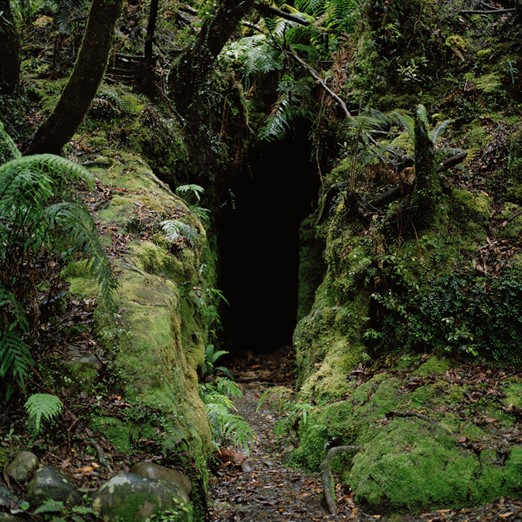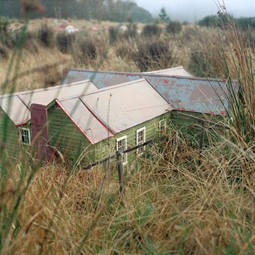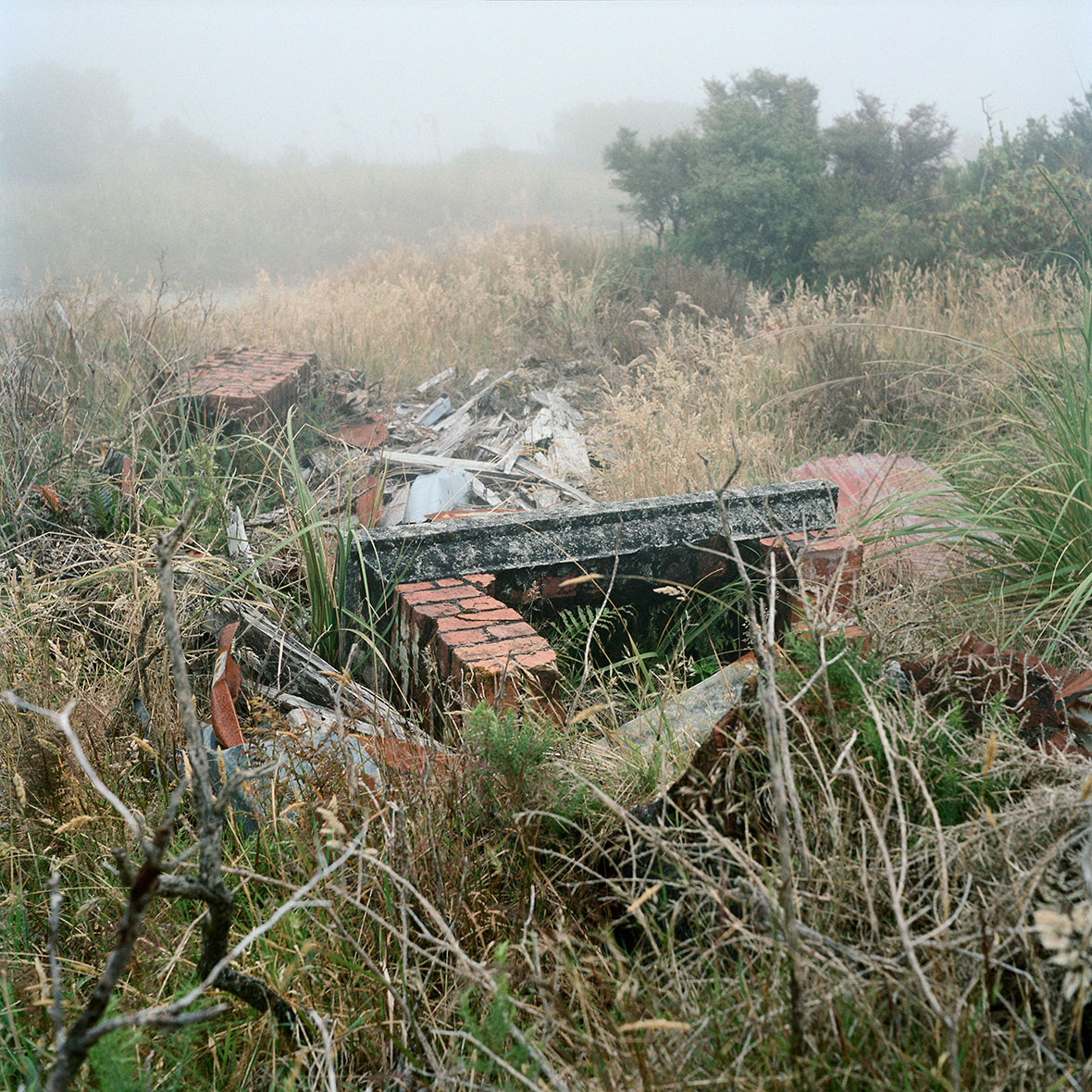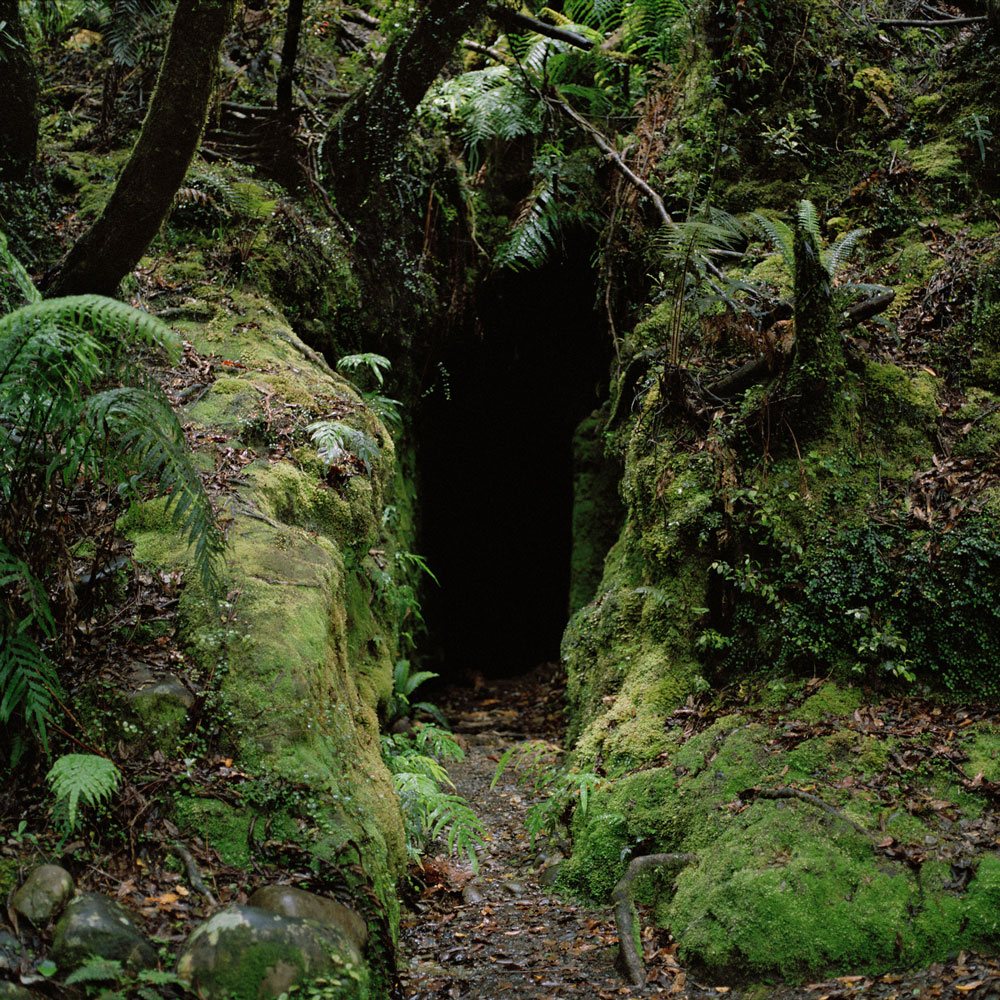Homewardbounder (2015) Enjoy Public Art Gallery, Wellington. Te Tuhi, Auckland.
Visualising the history of global industrialised colonialism in NZ, dark human-formed voids are set against organic foliage. Photographed using a square format to disrupt traditional landscape conventions, the physical void is a metaphor for historic miners who during the gold rush searched for the 'homeward-bounder' claim.
No Town (2014) Aratoi, Masterton. Te Uru Waitakere, Auckland. Left Bank Gallery, Greymouth. Carnegie Gallery, Hokitika.
A topographical photographic survey of extant gold and coal mining town sites in West Coast region alongside embroideries regarding the lost communities. Square format photographs concentrate attention on foregrounds highlighting what has been lost while the embroideries reference 19th and early 20th c. craft practices alluding to the domestic lives of the residents.
Waiuta (2015) School of Design, Art and Architecture, Plymouth University, UK. Ilam Gallery.
An exploration of the way our culture remembers historic places and lost communities, through the 'ghost town' Waiuta in the West Coast region. Differing layers of memory combine; from 'official' artefacts such as the preserved site itself and historic photos from the Alexander Turnbull Library, through to popular culture in photographs of model village 'Little Earth'. Together these elements contrast mechanisms we use to remember and recall, both individually and collectively.










